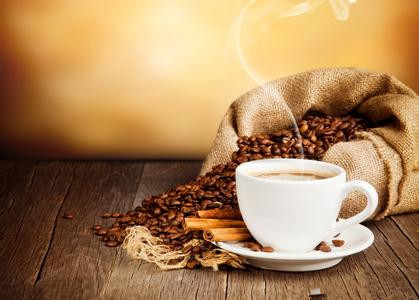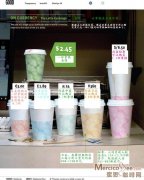Coffee common sense coffee aroma in Paris, France in the 17th century

I've been going to many cafes in recent years, and I'm getting bored. I often daydream about the old cafes, the old beauties that can only be read in books but cannot be experienced in person. For example, when it comes to cafes in Paris today, people's first impression is the relaxed and enjoyable atmosphere of relaxed seats in the shade of trees or in the Arbor. But in the past, Parisians drank coffee, which was not like this at all.
It was not until the mid-17th century that coffee gradually spread to France. At the beginning, most French families do not have many cafes to go to, just wait in the house, there will be a kind of coffee vendor, walking through the streets to sell coffee. Sometimes when the family is entertaining the guests, the well-informed vendor comes with hot coffee and serves them cup by cup. Forget about the money, when the guests have finished enjoying it, the host will naturally have to pay for it.
Later, Parisians are used to drinking coffee and often go to the alley in the morning to stop the peddler and buy a cup. When they get home, they mix barley flour or broad bean powder to make the coffee paste to drink. You can't think of such a "corny" way of drinking, can you? At that time, most of the people who drank coffee in this way were ordinary people, and the emerging bourgeoisie also paid attention to drinking pure black coffee.
At that time, Parisians knew someone was coming to sell coffee when they smelled the smell of coffee from afar. This scene is very similar to when we were young waiting for popcorn at home. As soon as we heard a loud noise, the child immediately took half a bowl of rice out of the house, looking for the grandfather with the black bucket machine. Such simple and kind scenes of life have now disappeared.
This is a simple way to drink, and there are also luxurious ones. In the ancient capital of Istanbul, coffee culture was accepted earlier than France. In the 16th century, Istanbul imitated Syrian cities and highly praised the "Palace Cafe". Unlike today's elegant courtyard cafes or smaller country cafes, "Palace Cafe" is often full of luxury, with a large pattern, permanent corridors and large windows, as well as small bridges, running water, fountains, exotic flowers and plants. In a book called the History of the Ottoman Empire, it was recorded: "the luxury cafe here is built both inside and outside, with sofas, recliners, cushions and feather fans. If you are bored indoors, you can also get out of the outdoor observation deck and get some breath. there are seats on the floor of the stone watchtower, blowing a breeze and enjoying the passing passengers of cars and horses. "
This refers to the luxury cafe in Istanbul, which also has various entertainment such as storytelling, piano playing, juggling, chess, dance and so on, which also attracted many elegant celebrities at that time. Amorous feelings, a bit like the teahouse theater in old Beijing, of course, has long ceased to exist.
Important Notice :
前街咖啡 FrontStreet Coffee has moved to new addredd:
FrontStreet Coffee Address: 315,Donghua East Road,GuangZhou
Tel:020 38364473
- Prev

Coffee common sense the different prices of a Starbucks latte
- Next

General knowledge of fine coffee layered map of all kinds of coffee drinks
Espresso [ess-press-oh] Espresso Macchiato [ess-press-oh mock-e-ah-toe] Espresso con Panna [ess-press-oh kon pawn-nah] Caff Latte [caf-ay lah-tey] Flat White Cafe Breve [caf-ay brev-ay] Cappuccino [kapp-oo-chee-noh] Caff Mocha [caf-ay moh-
Related
- Beginners will see the "Coffee pull flower" guide!
- What is the difference between ice blog purified milk and ordinary milk coffee?
- Why is the Philippines the largest producer of crops in Liberia?
- For coffee extraction, should the fine powder be retained?
- How does extracted espresso fill pressed powder? How much strength does it take to press the powder?
- How to make jasmine cold extract coffee? Is the jasmine + latte good?
- Will this little toy really make the coffee taste better? How does Lily Drip affect coffee extraction?
- Will the action of slapping the filter cup also affect coffee extraction?
- What's the difference between powder-to-water ratio and powder-to-liquid ratio?
- What is the Ethiopian local species? What does it have to do with Heirloom native species?

